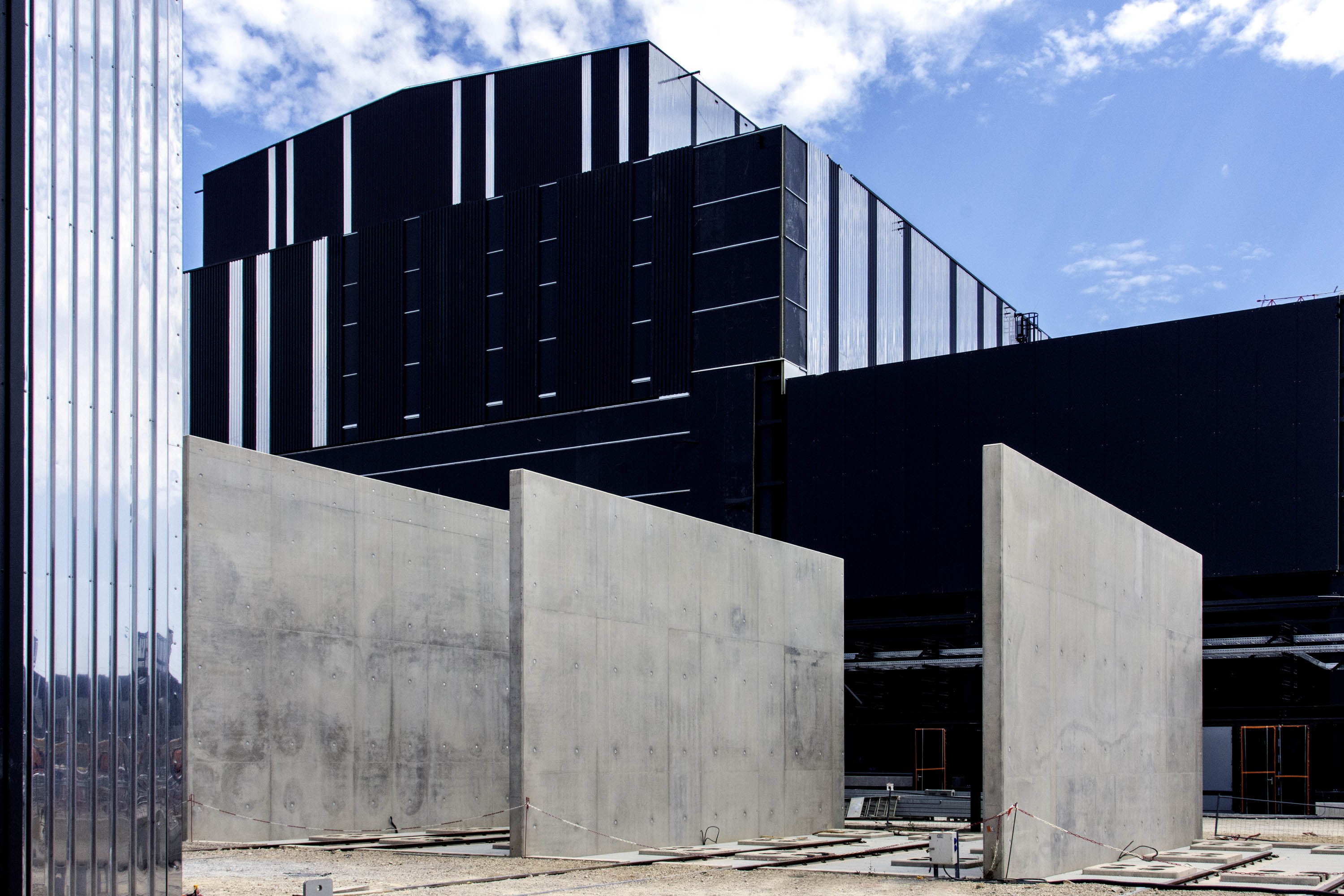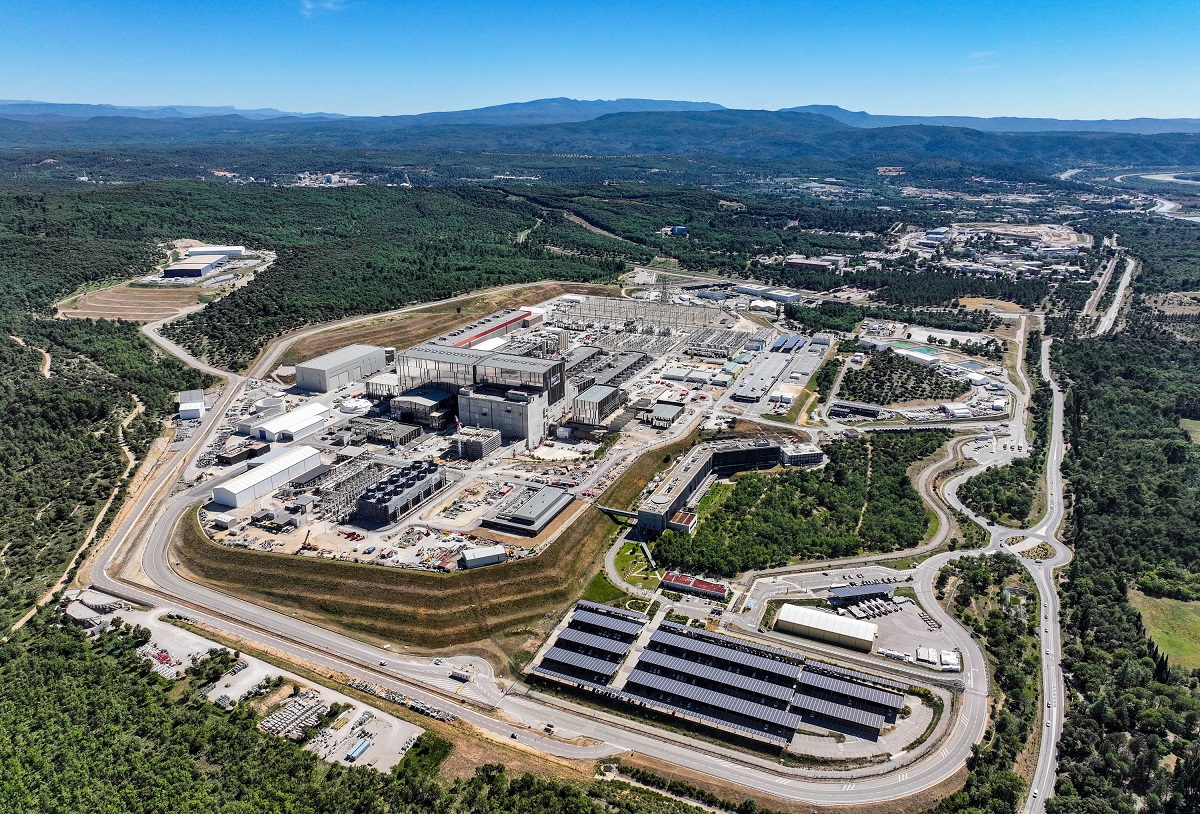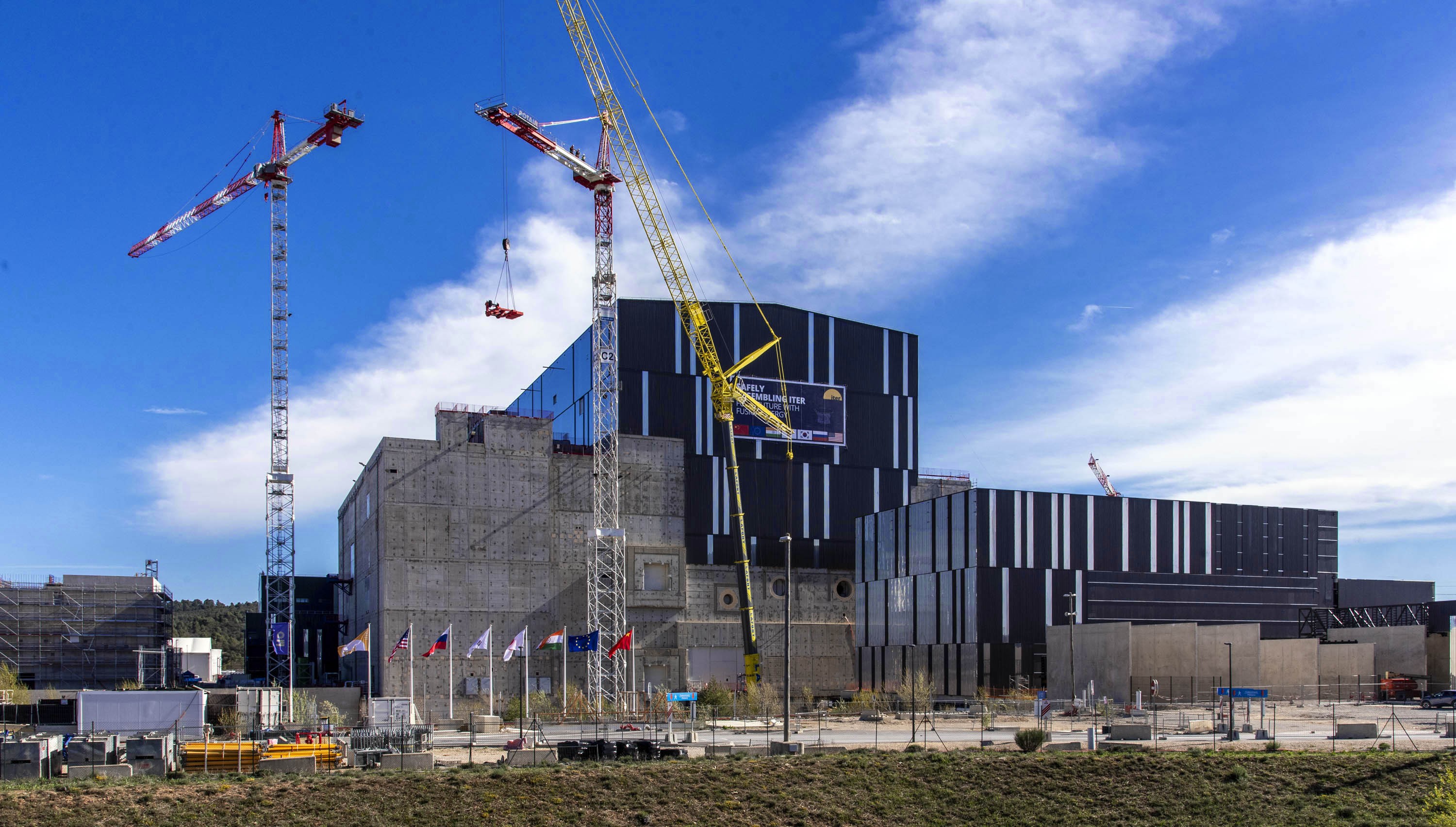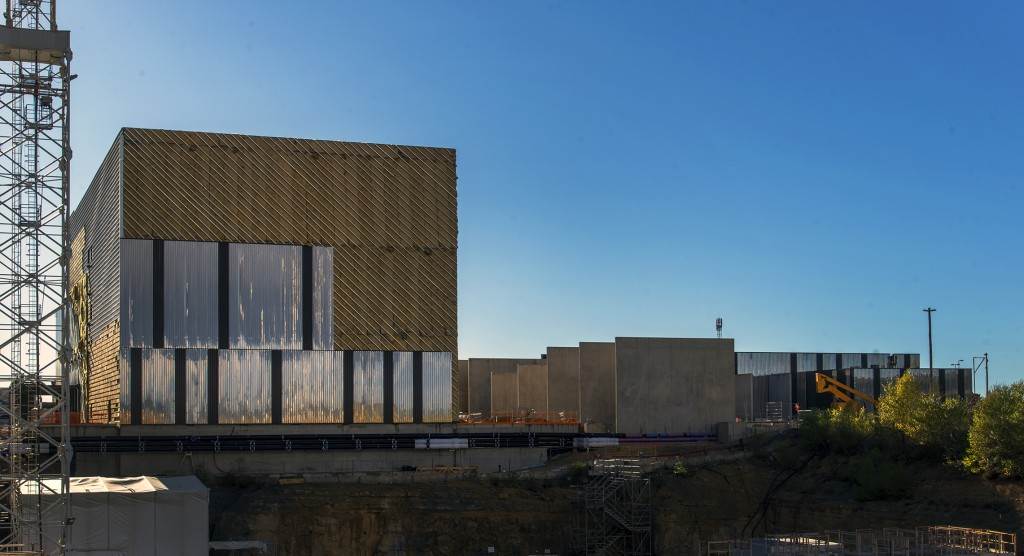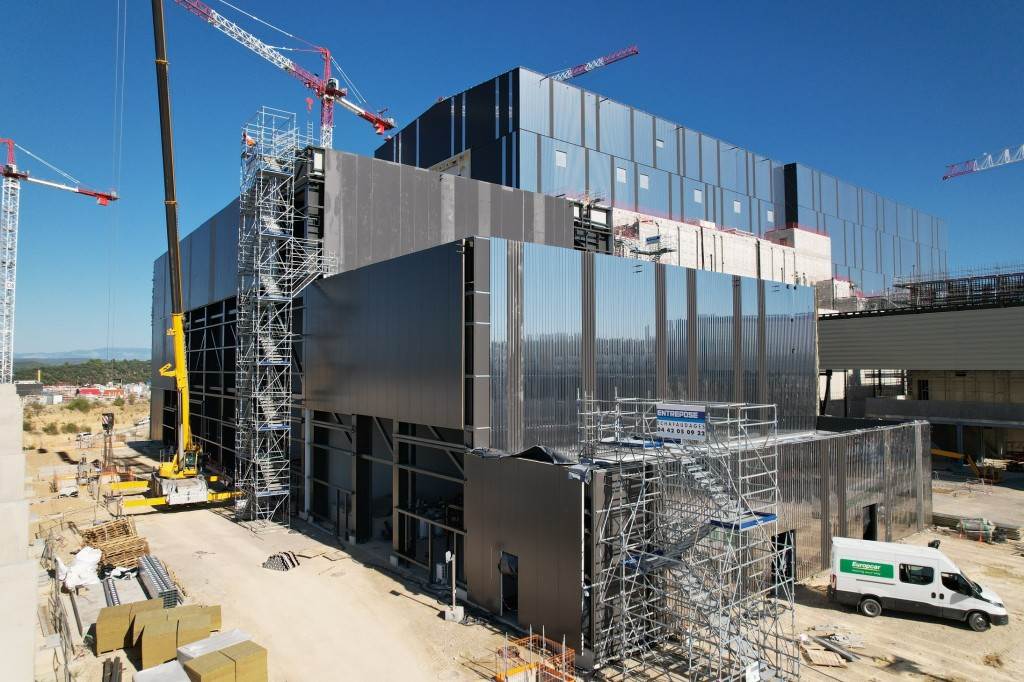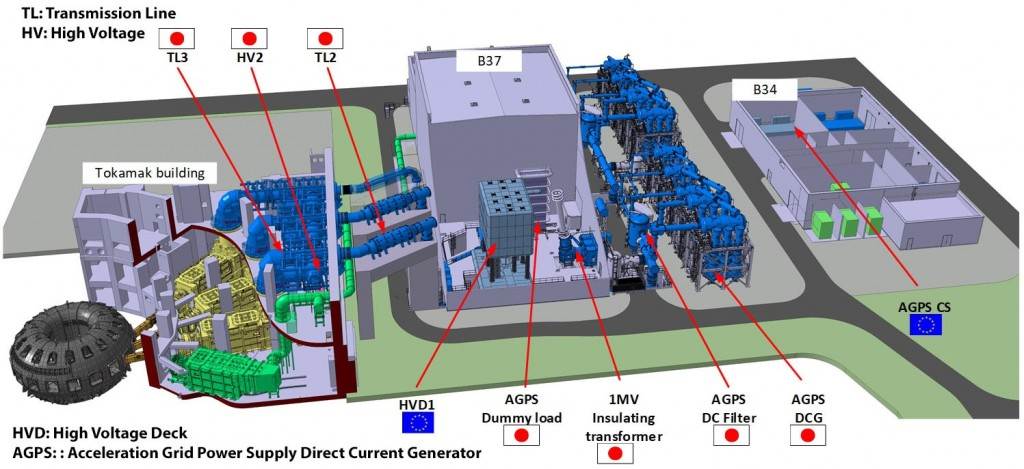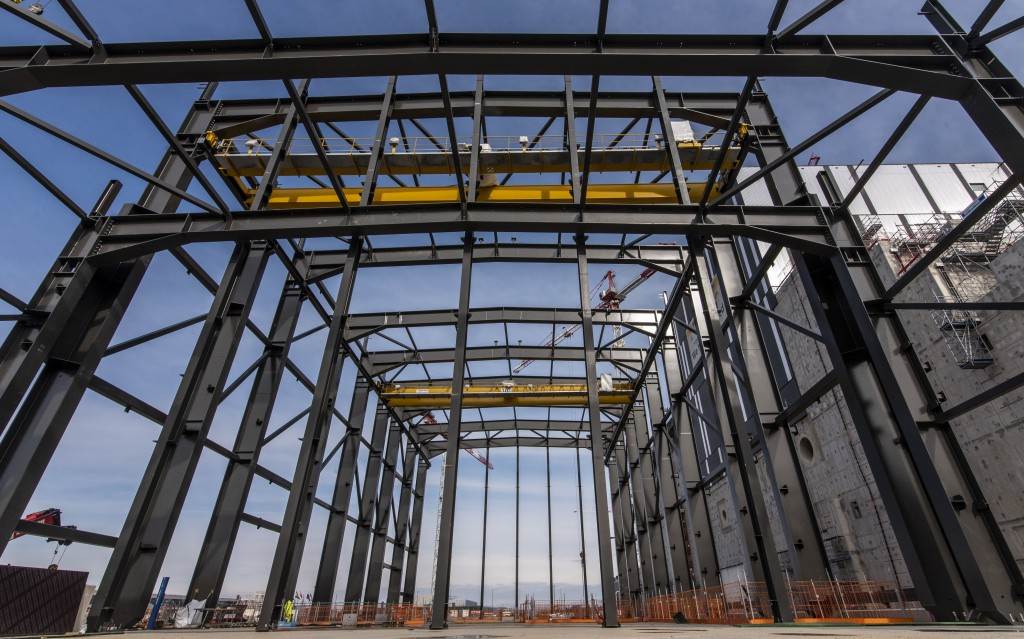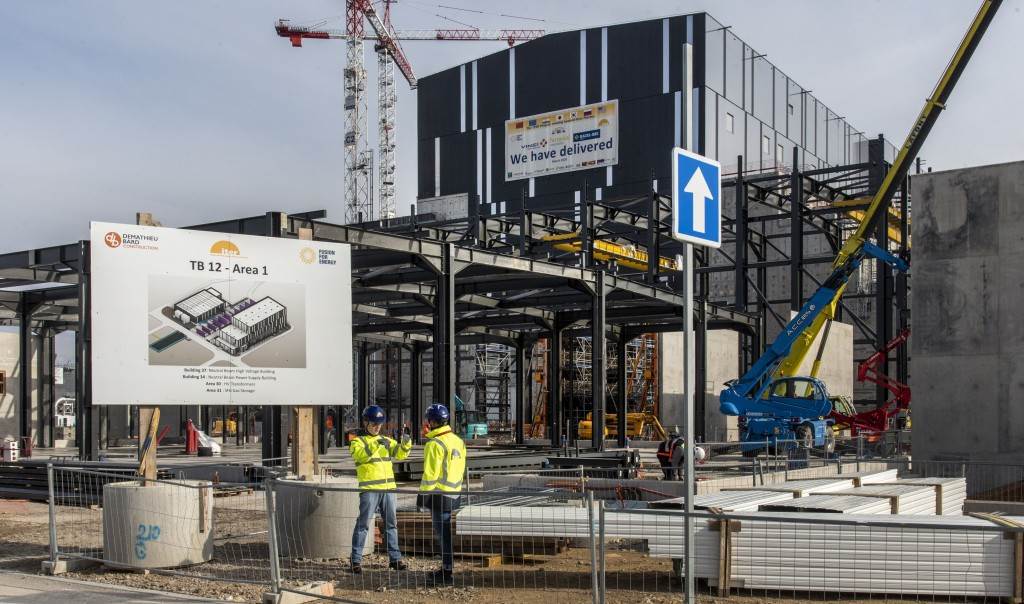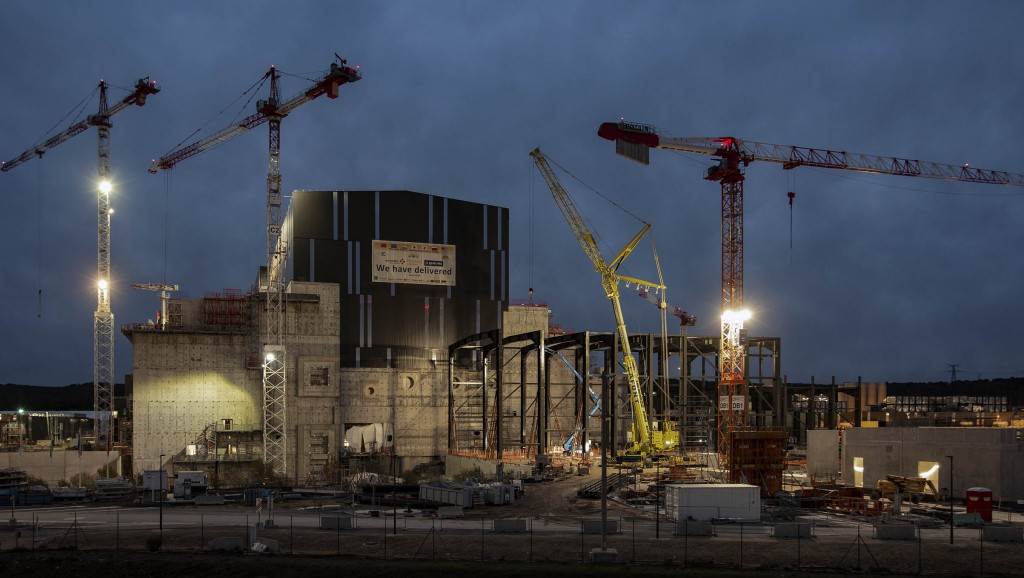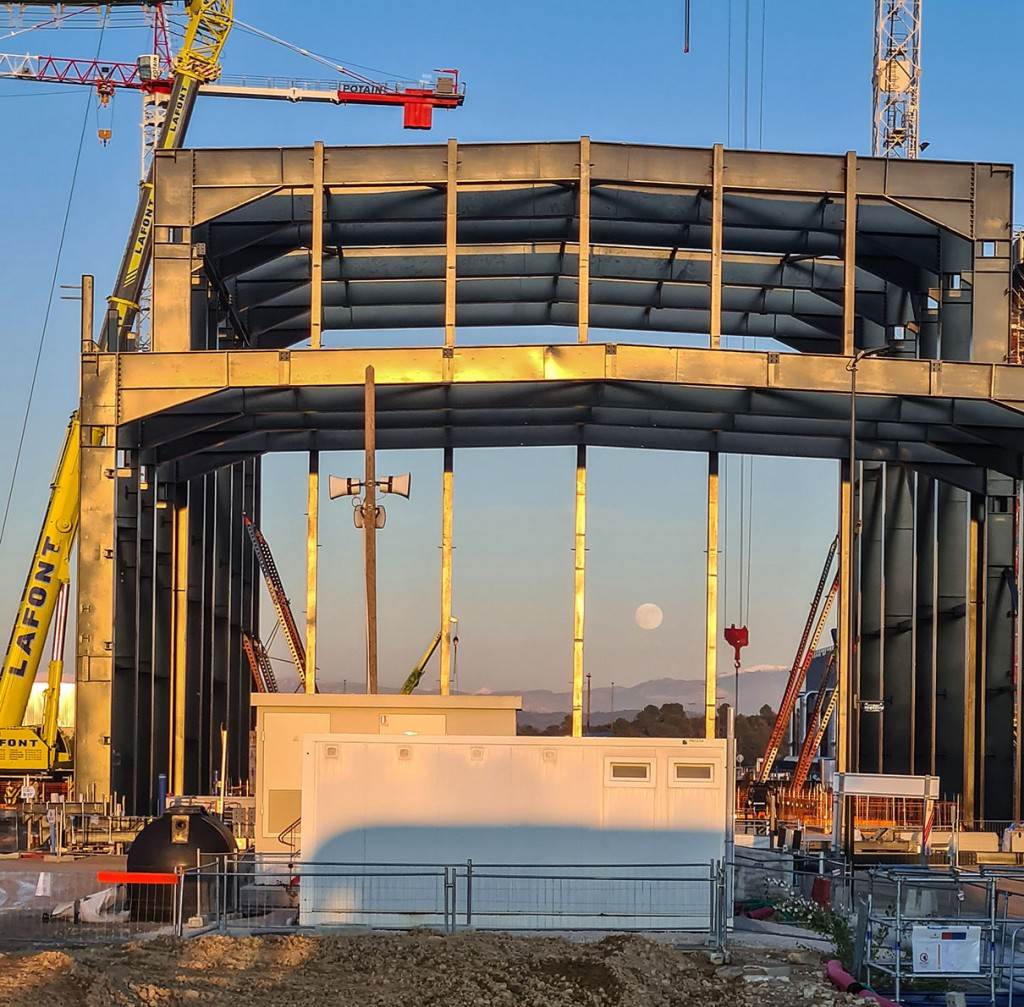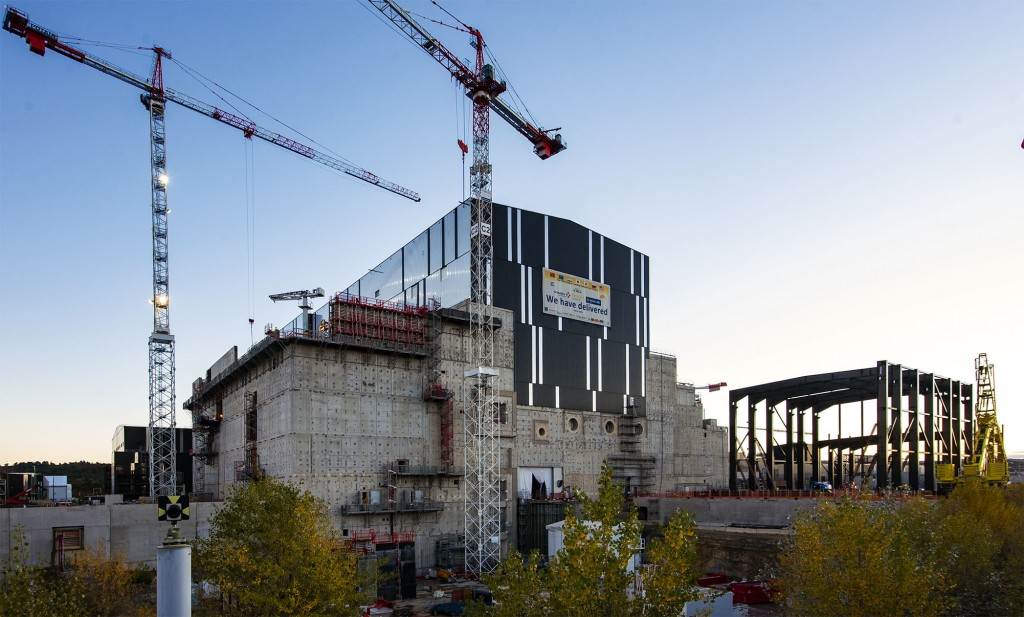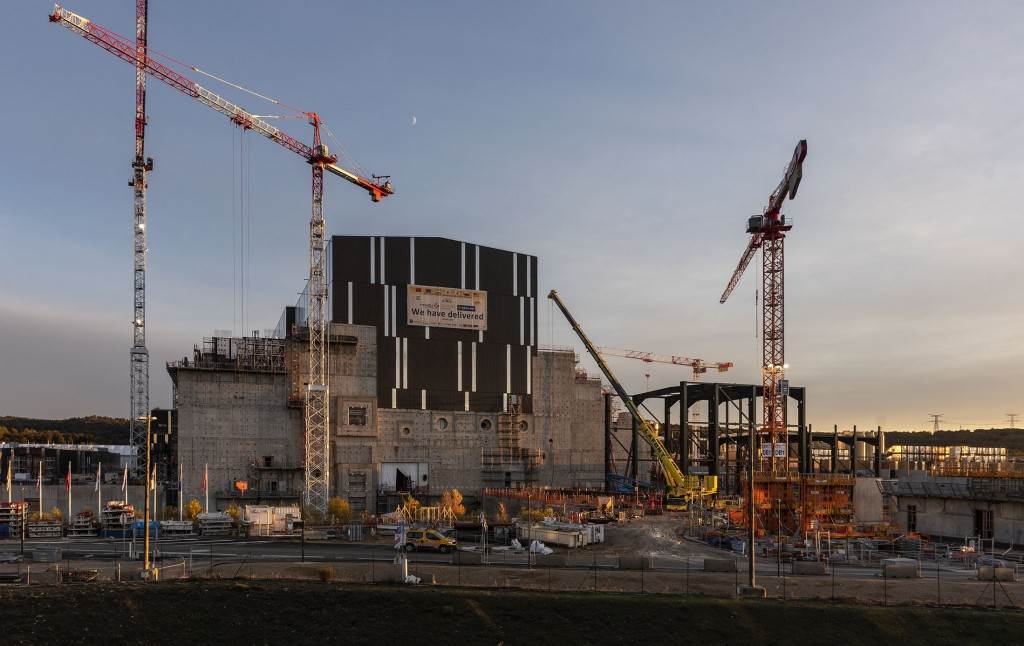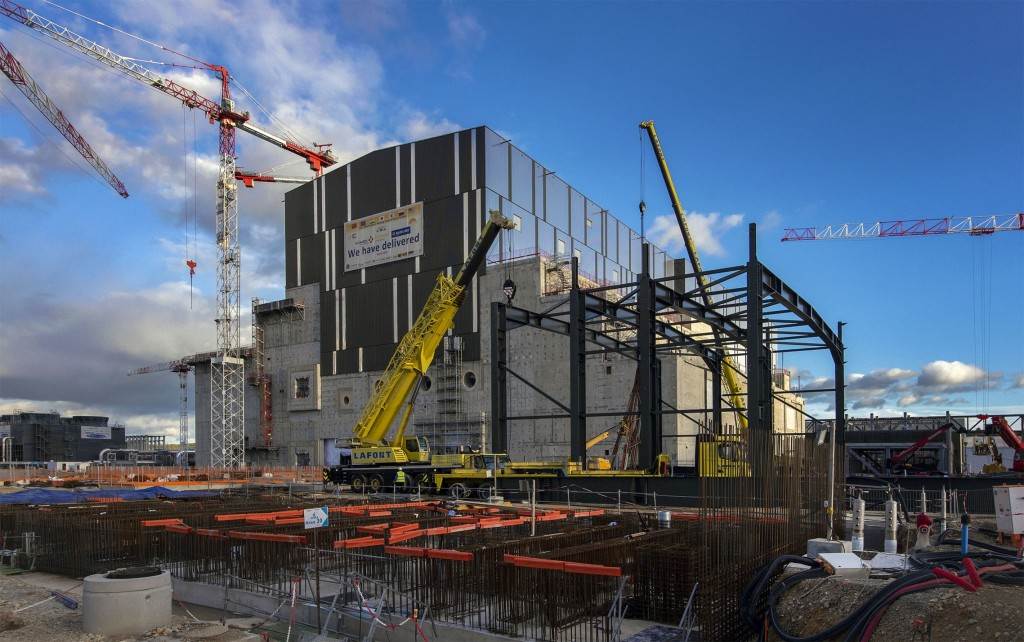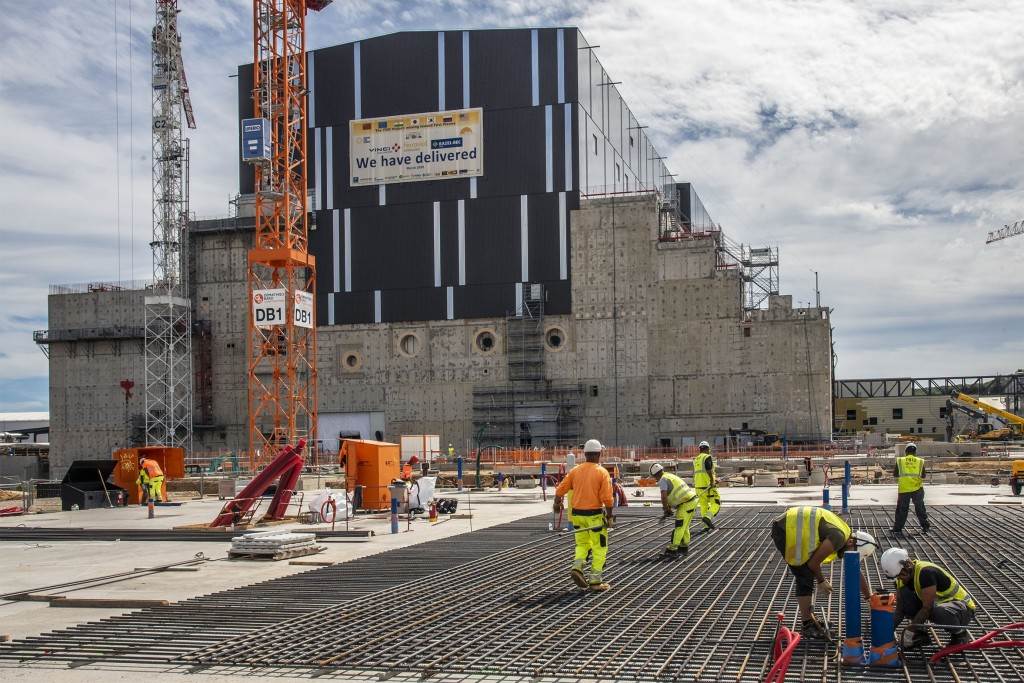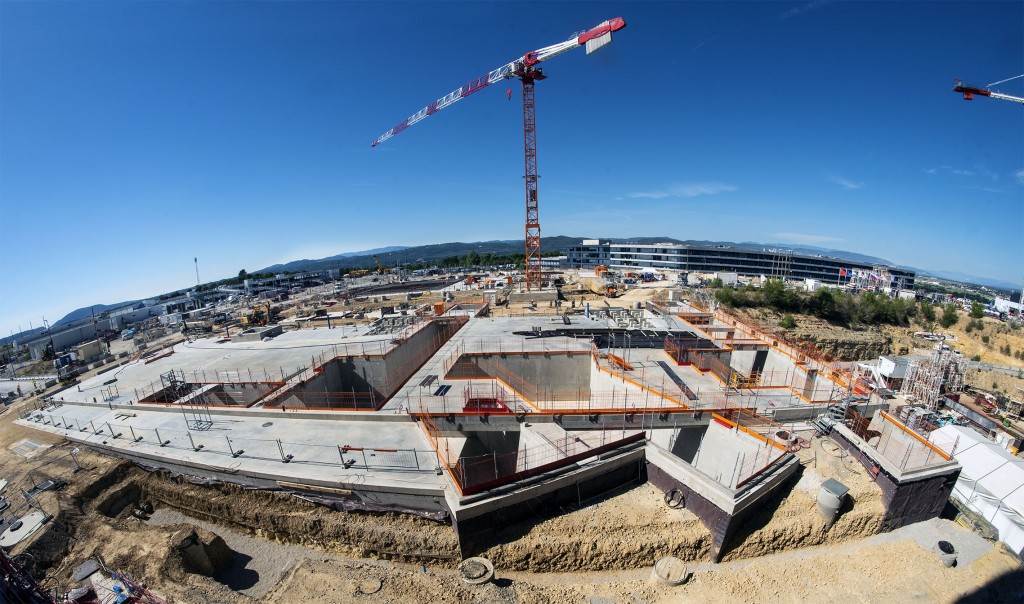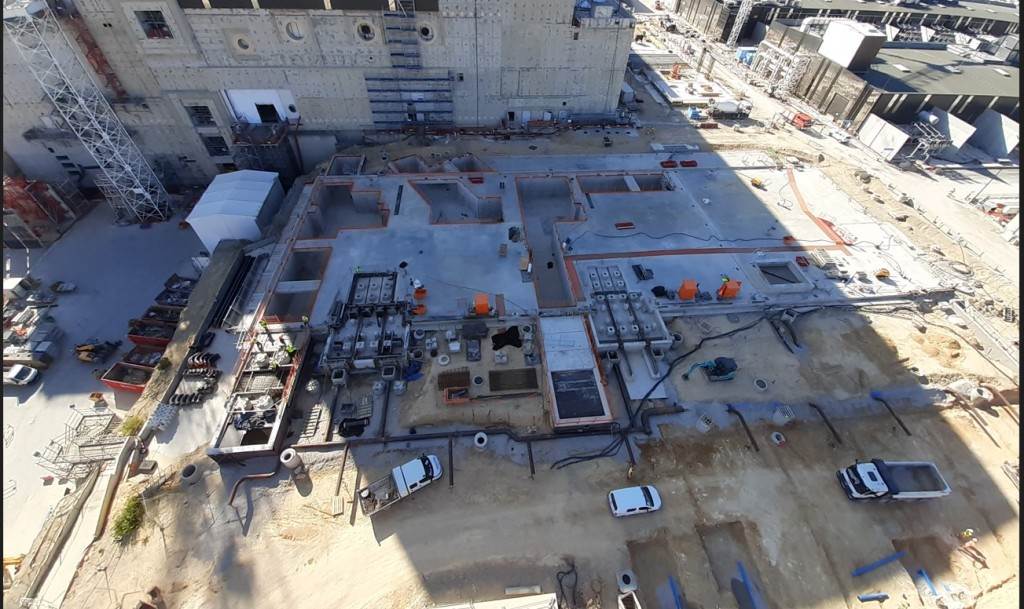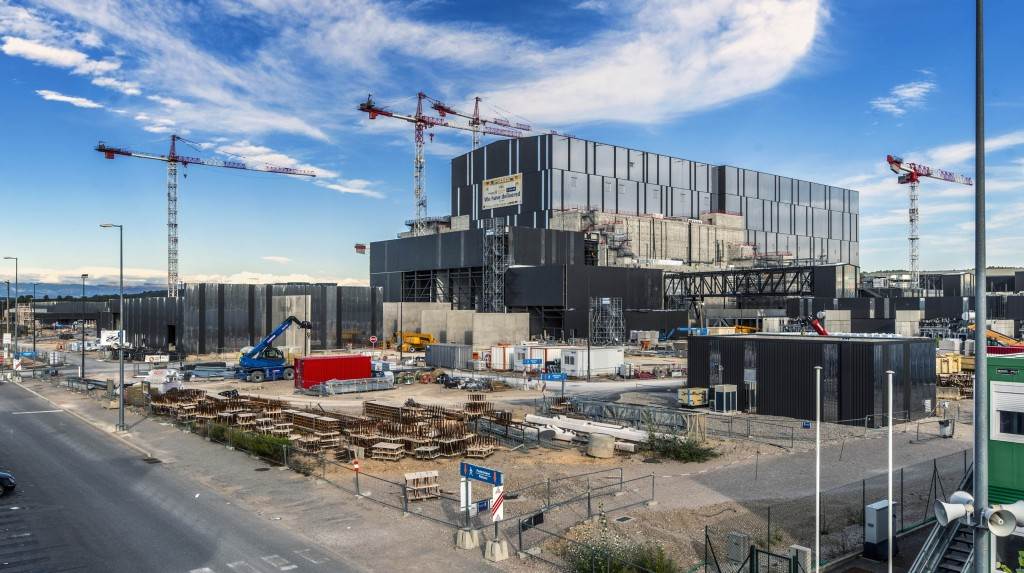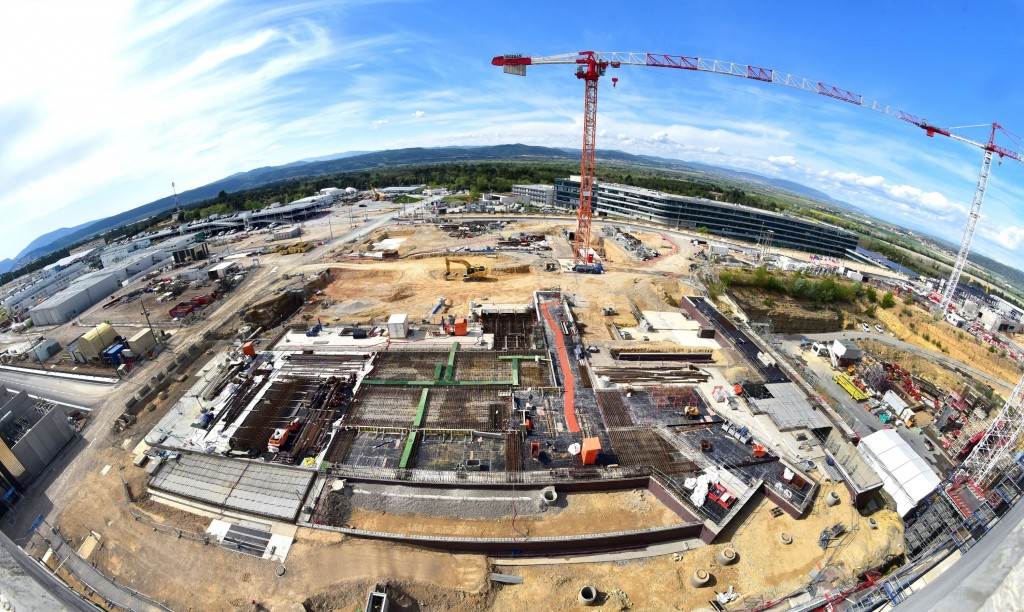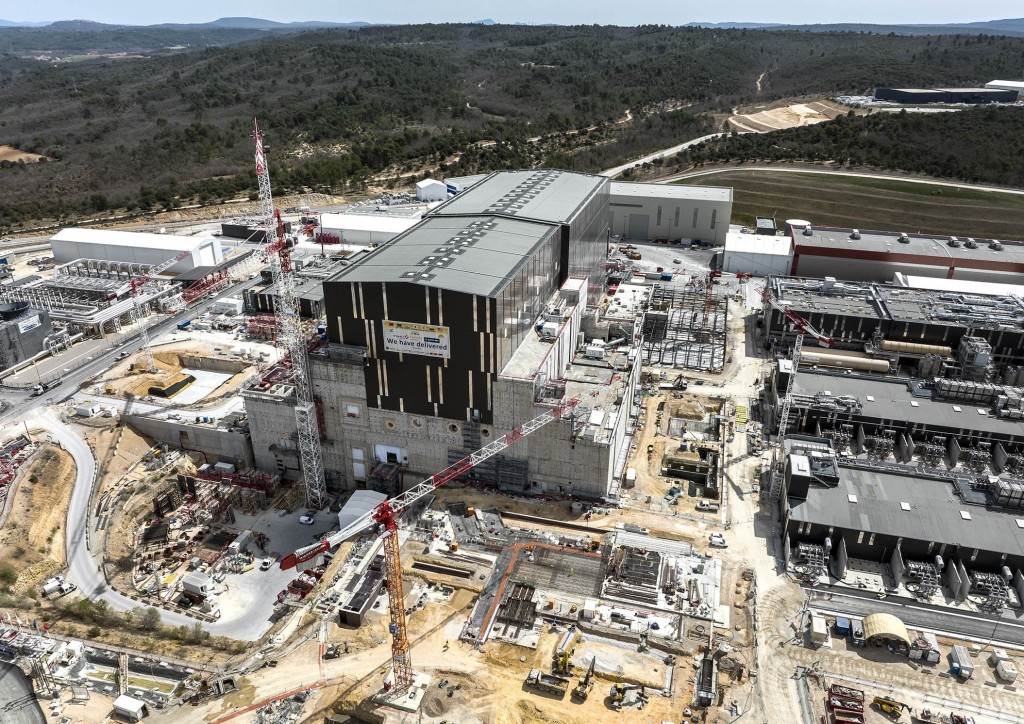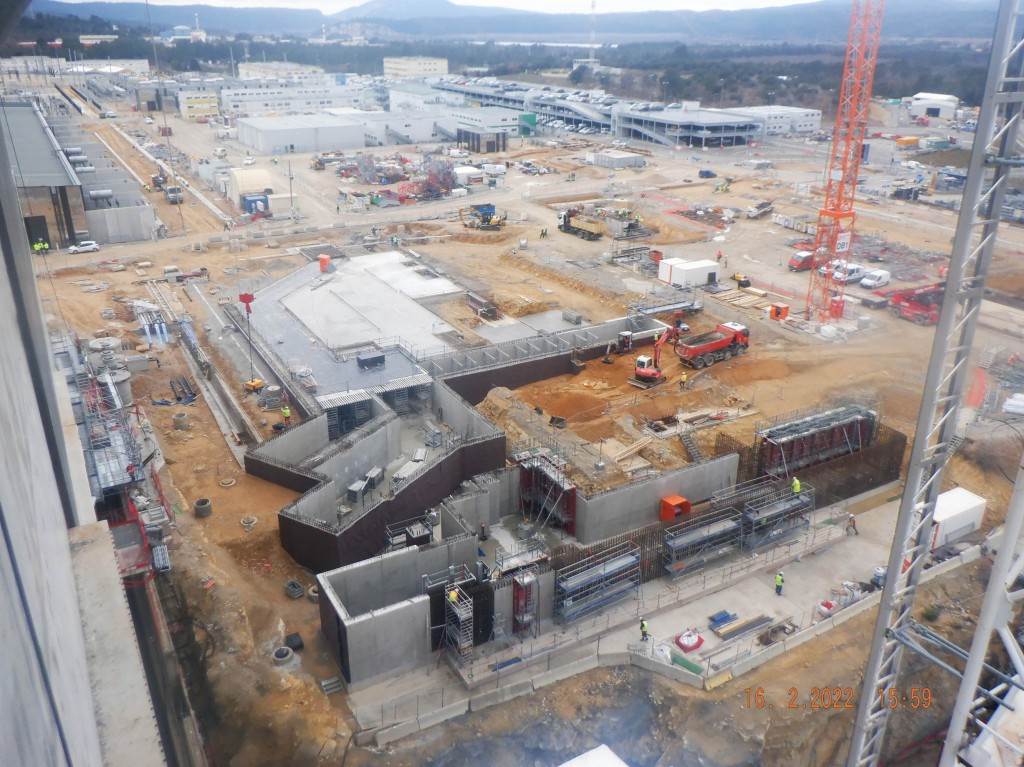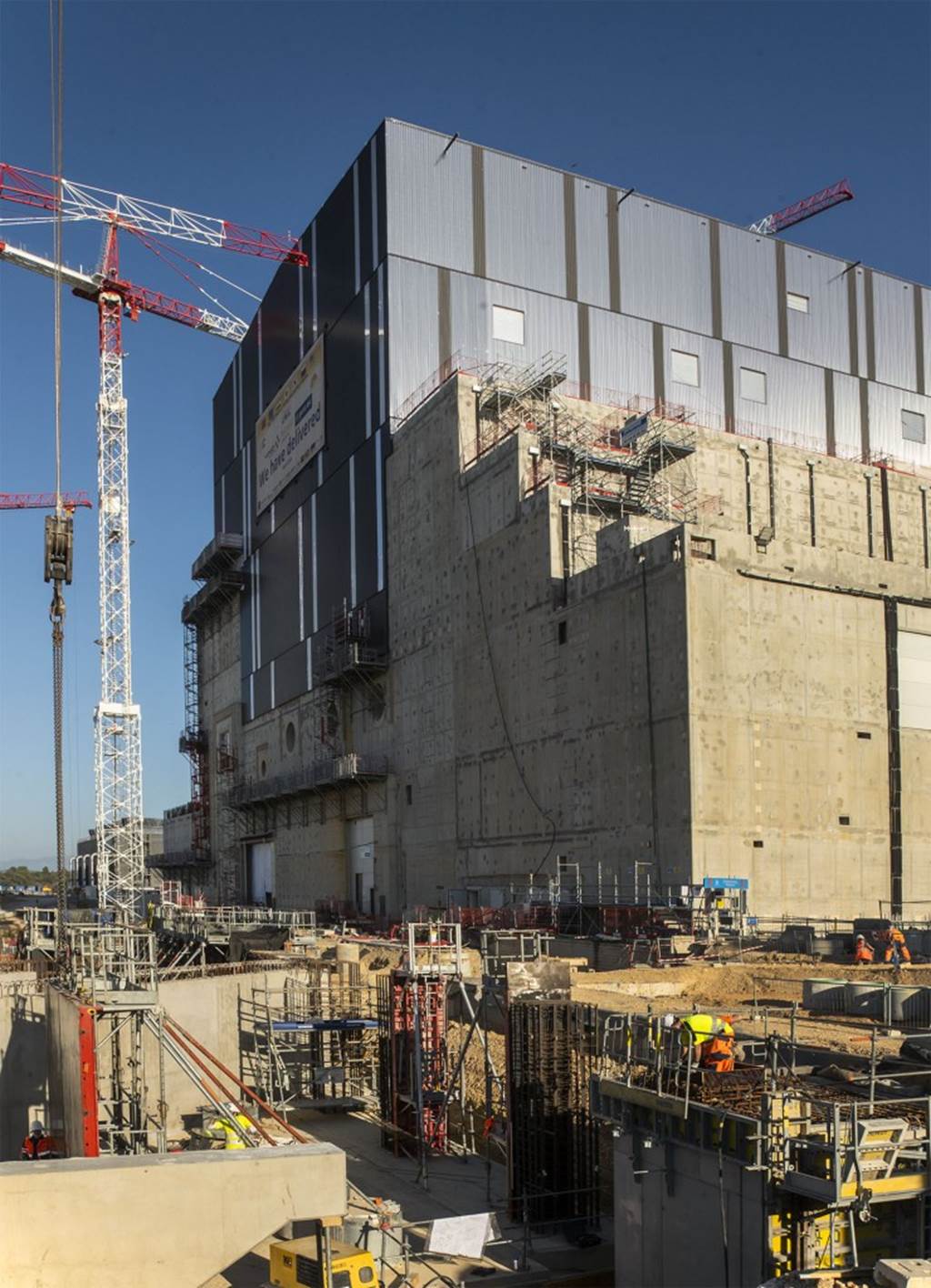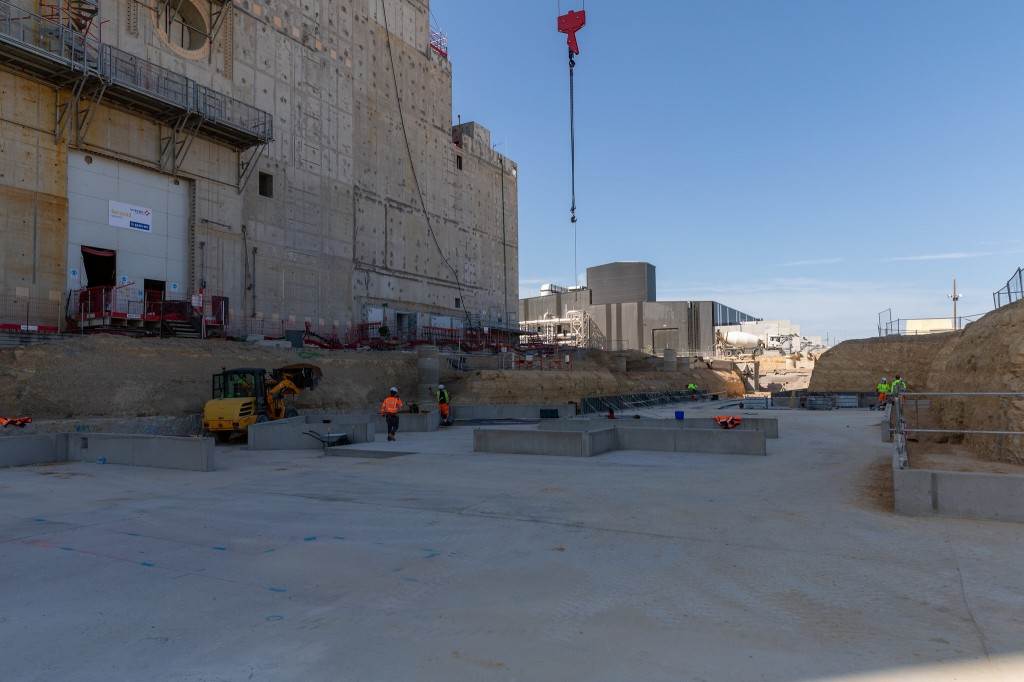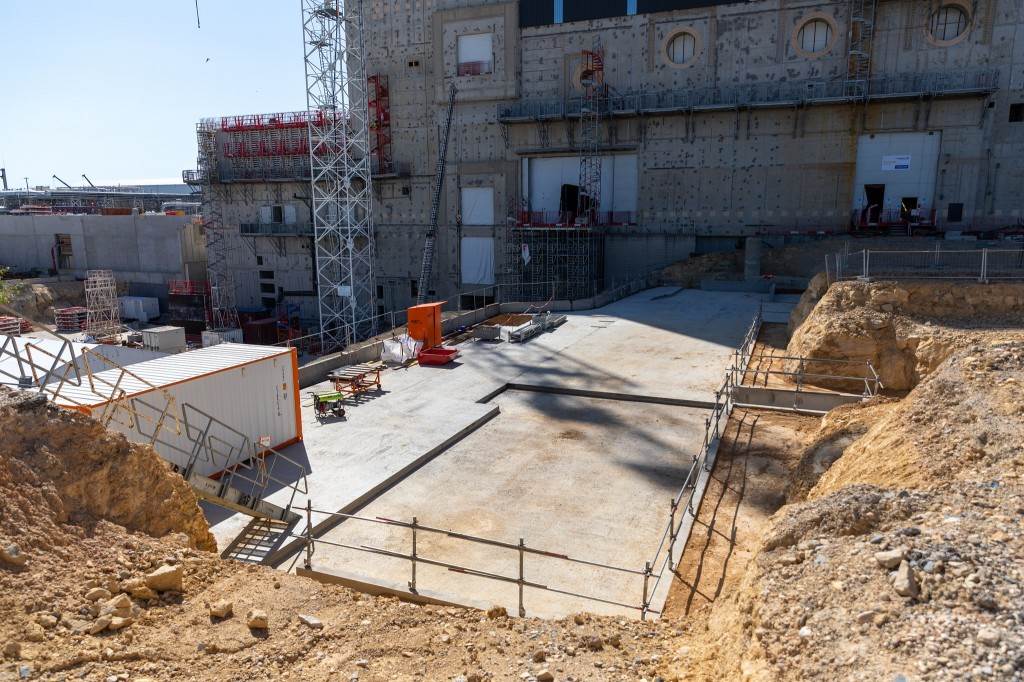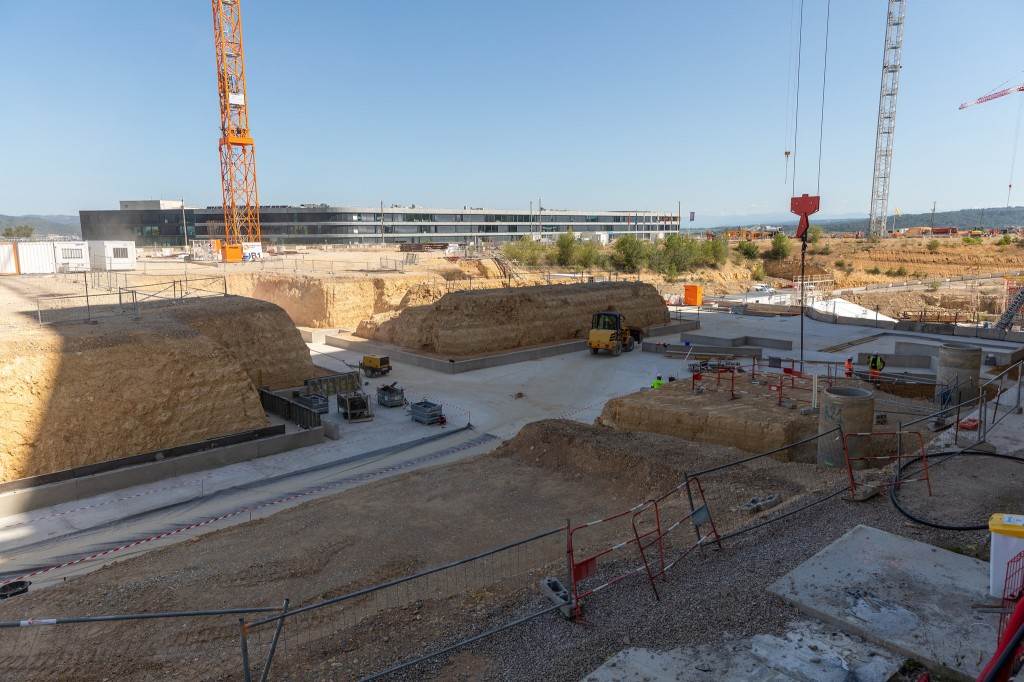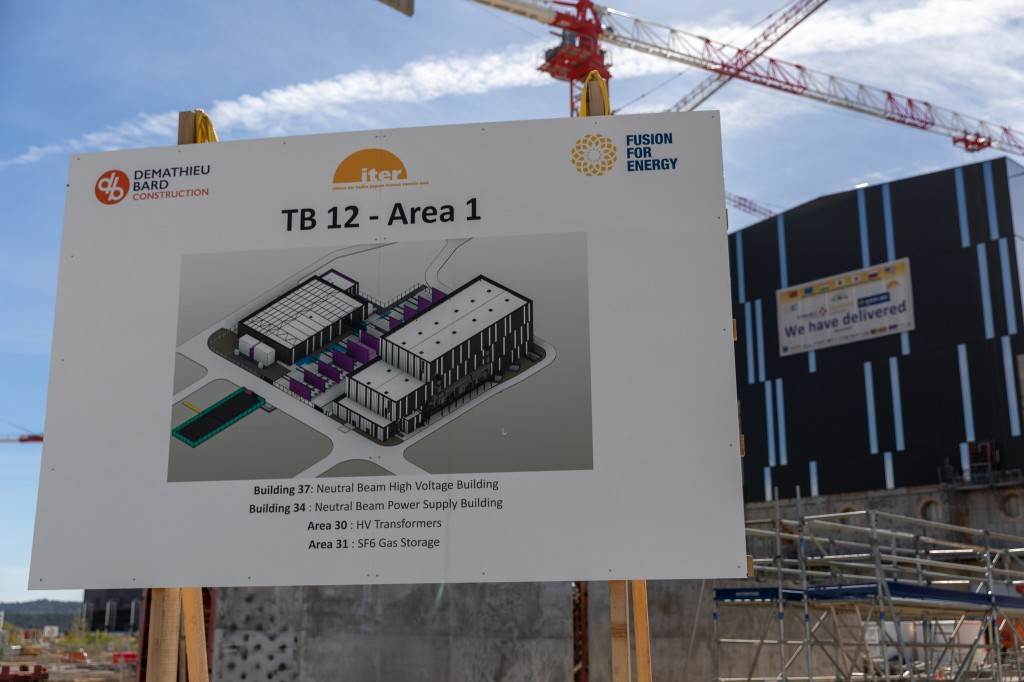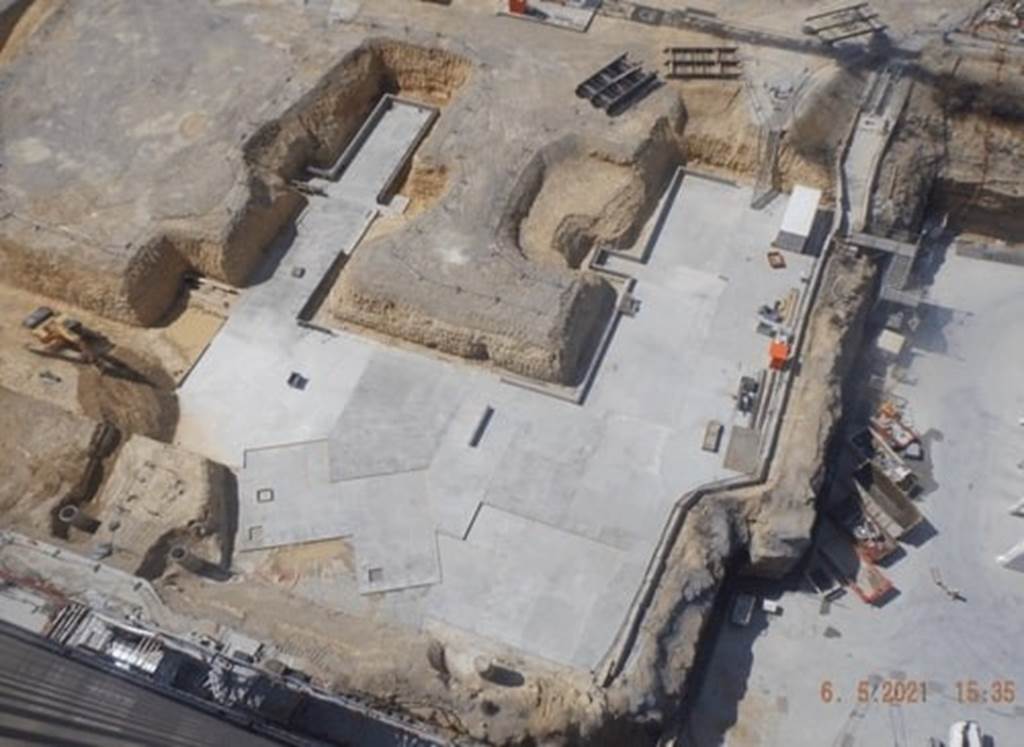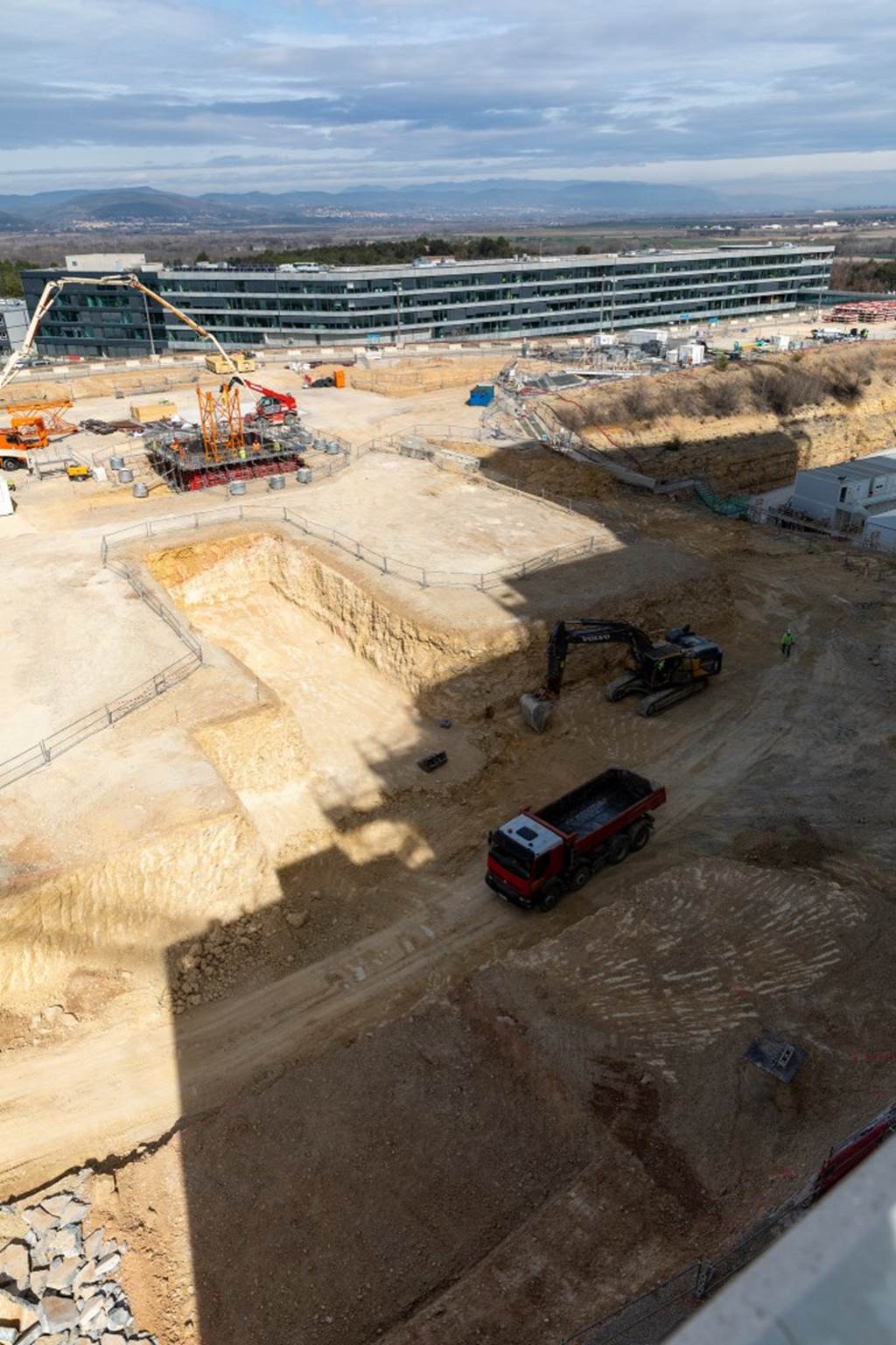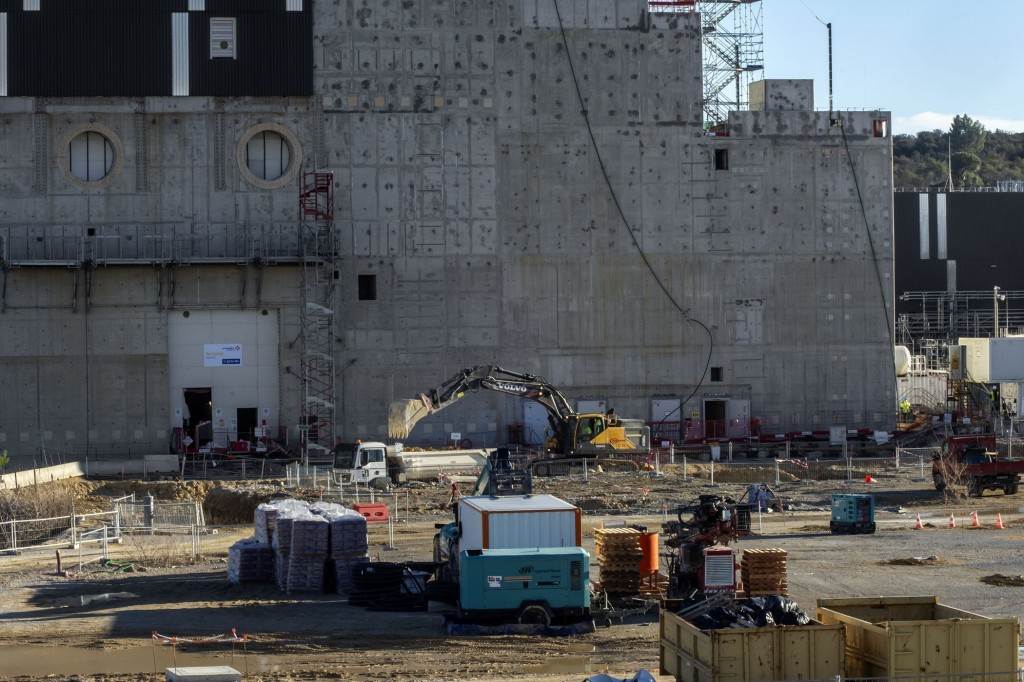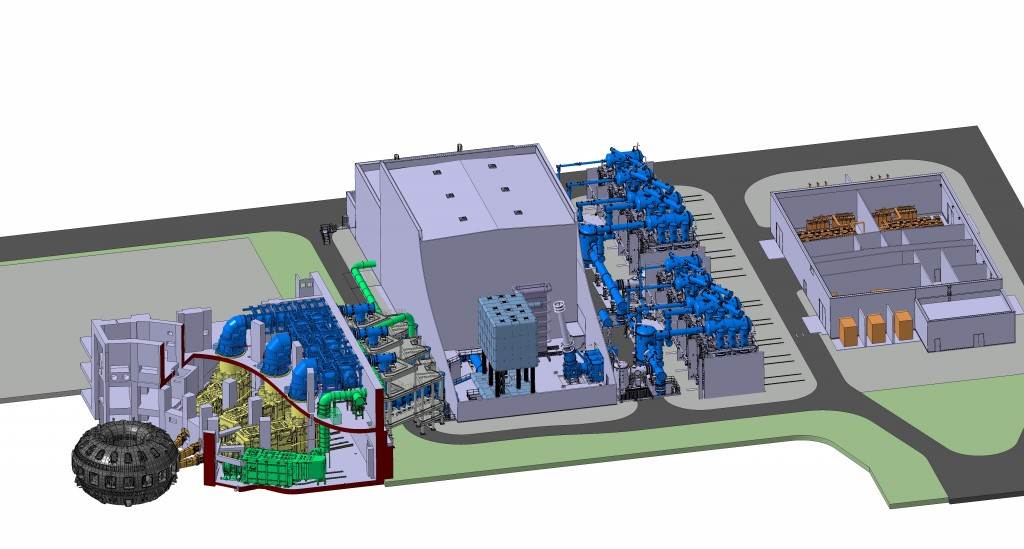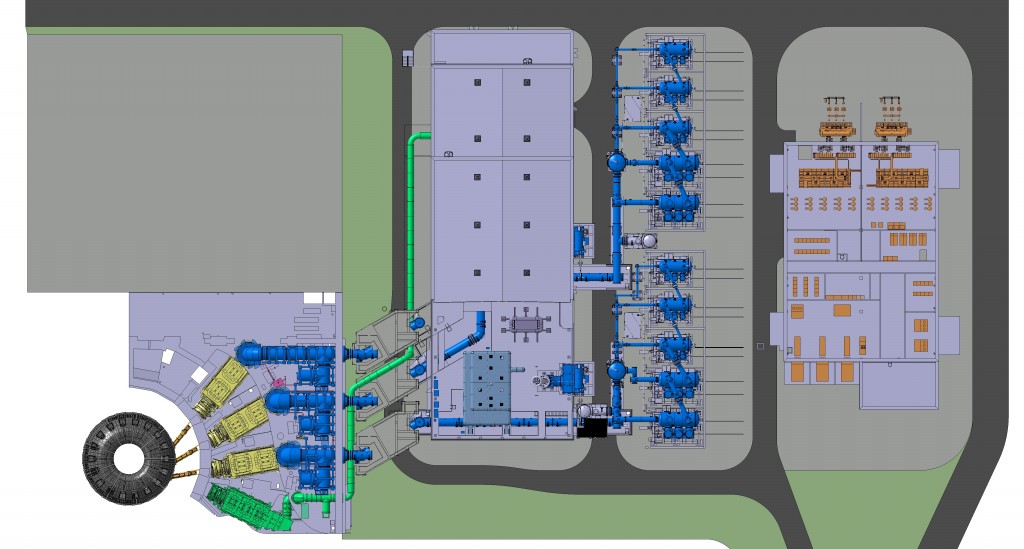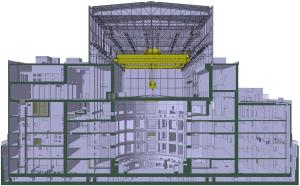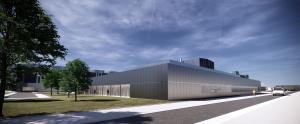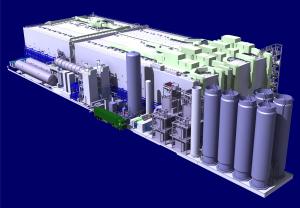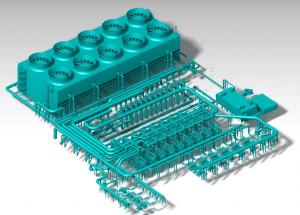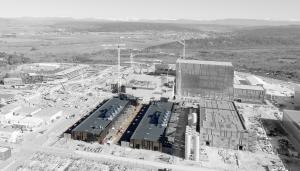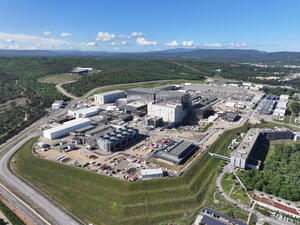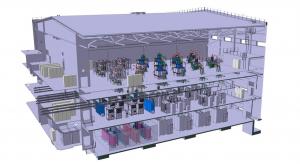Neutral Beam Power Supply
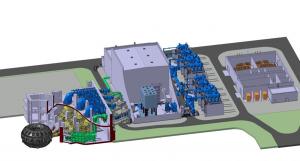
Hosted across two buildings and an outdoor technical area (centre and right), the ITER neutral beam power supply installation comprises an array of transformers, generators, rectifiers, inverters and other exotic electrical devices designed to feed at 1 MV ultra high voltage to the injectors.
Inside the Tokamak Building, two bus-sized neutral beam injectors will deliver high-energy beams of neutral deuterium atoms into the plasma for heating as well as current drive and current profile control, while a third, smaller injector will generate a probe beam for diagnostic purposes.
Outside the Tokamak Building, the equipment needed to make these injectors work will be housed in a 11,700 m² area that comprises two steel-frame buildings and one outdoor technical zone. The Neutral Beam Power Supply area is adjacent to the Tokamak Complex's north wall, close enough to connect transmission lines to the heating neutral beam injectors in the Tokamak Building.
Neutral beam injection is the most powerful of ITER's auxiliary heating systems, supplying 33 MW of the necessary 50 MW of input power. ITER's two* neutral beam injectors will use electrical voltage to accelerate particles to incredible speed before "neutralizing" them in order to penetrate the magnetic cage and communicate their kinetic energy to the plasma. ITER's neutral beam system is required to deliver 1,000,000 volts (1MV) for durations of up to one hour; for comparison, the system on JET system delivers approximately 130,000 volts for a few seconds, while in the Euro-Japanese tokamak JT-60SA, neutral beam power will reach 500,000 volts for a few minutes. The power supply infrastructure for such a system is absolutely unprecedented, and represents the largest part of system cost (60 percent).
* There is a space reservation built into the machine and building design for a third injector if required by the ITER scientific program.
"Beyond-state-of-the-art" components
Producing 1MV of direct current (DC) voltage and delivering it to the accelerating grids inside the injectors requires an array of transformers, generators, rectifiers, inverters and other exotic electrical devices.
The high voltage decks for the heating neutral beam lines, for example, are two-storey metallic boxes containing 50 tonnes of equipment (transformers, power distribution systems, converters and control cubicles) that stand on six-metre tall legs in order to isolate the equipment from the ground. The corresponding high voltage bushings, which connect the power supplies to the transmission lines, stand 12 metres tall.
To test all of the technological elements of the neutral beam injection system—including the power supply components—the ITER Organization and the European, Japanese and Indian Domestic Agencies have established the ITER Neutral Beam Test Facility (NBTF), hosted in Padova (Italy) by Consorzio RFX. The components tested at NBTF are the same as those that will be used on the heating neutral beams at ITER, which will allow the ITER team to acquire valuable information about equipment manufacturability and operation. Similarly, the power supply components manufactured for the smaller diagnostic neutral beam will first be operated at a test facility in India before shipment.
The Neutral Beam Power Supply buildings are now in place on the ITER platform. AC/DC rectifiers, DC/AC conversion systems, and other low-voltage power supply equipment will be housed inside the Neutral Beam Power Supply Building (Building 34). High voltage (HV) equipment, including one HV deck and one HV deck bushing per injector, will be housed in Building 37—the High Voltage Building—and an exterior technical zone (Area 30). Transmission lines entering the Tokamak Building through the north wall at L3 level will deliver power from the neutral beam power supply area to the injectors.
To learn more about neutral beam injection at ITER and testing underway at NBTF, see this page.
Neutral Beam Power Supply area facts:
- Construction: 2023-2024
- Total area: 11,700 m²
- Building 34 dimensions: 45 m x 32 m x 9 m (L x W x H)
- Building 37 dimensions: 86 m x 30 m x 25 m (L x W x H), including two 30 x 30 metre high voltage halls and a smaller diagnostic neutral beam hall (18 m x 30 m)
- Heating neutral beam high-voltage deck (HVDeck1) with ion source power supplies inside: 12 m x 8 m x 10 m (L x W x H), 100 tonnes, installed on 6-metre-high insulating supports
Main neutral beam power supply equipment
- 3 medium voltage dry transformers 22kV/0.6 kV in B34
- 2 high voltage transformers 66 kV /1.2 kV in front of B34
- 3 medium voltage transformers 22 kV /0.6 kV with insulation at 100 kV
- 10 high voltage transformers with rectifiers at the output in outdoor area 30 with insulation at 1 MV
- 2 medium voltage transformers 22 kV/6.6 kV with insulation at 1 MV
- 1 medium voltage transformer 22 kV /6.6 kV with insulation at 100 kV
- 672 tonnes of oil for the transformers
- 187 metres of transmission lines (with SF6 inside at 6 bars for the heating neutral beam power supply)
- Several power converters (rectifiers and inverters) in B34
- Several power converters (rectifiers and RF generators) in HVDeck1 (B37)

